In fact, the causes of this phenomenon during growing tomatoes in a greenhouse can be very diverse. And out of ignorance, beginners to the gardener can simply miss a moment.
• The first cause may be overheating of the bush. That is, if the temperature in the greenhouses is too high, then the leaves may simply not have enough moisture. But it is simply necessary for natural cooling. At high temperatures, the plant is not able to fully absorb nutrients. It is from such heat that the leaves can curl. It is very rare that the leaves even dry out. This can be prevented by watering the plant well and spraying the leaves with urea. It is very simple to cook. Need only one bucket of water 2 tbsp. urea. Such a solution should be used for a couple of days, and then urea can be replaced with manganese.
• The second reason may be a lack of fluid. Because of this, the leaves can also curl. They will recover a couple more weeks.
• Leaves of the plant may curl due to a lack of fresh air. That is why greenhouses should be regularly ventilated.
• Improper top dressing also causes leaf curl. They can even dry out if you go too far with nitrogen fertilizers. Also, if potassium, calcium, iron and other useful elements are absent in the soil, the leaves curl. Manure is forbidden to enter as fertilizer, as it emits harmful ammonia.
• The plant may have some kind of disease. It is worth caring for, spraying with chemical agents.

Helpful information
It is very important to properly transplant seedlings into greenhouses. We must see that they are not overgrown or adults. This greatly affects the root system of the plant. If elementary rules are not followed, then the leaves tomatoes in the greenhouse can twist.
It is also not allowed to sharply pull out a bush. If the roots are damaged, then the tomatoes will give all their strength to restore the root system, and the leaves, in turn, will not be able to get all the necessary nutrients.
It is necessary to carry out the stepsoning procedure correctly. It involves a cut of the lower processes of the bushes. This procedure can be carried out 2 weeks after planting tomato bushes in a greenhouse. Stepsons 7 cm long must be cut once a week. At the cut point, you can measure the stumps. They should be 2 cm. The leaves may curl due to improper watering. Need to find a middle ground. That is, you can’t water too abundantly and just do not forget about this procedure.
There are many different videos on the topic of why tomato leaves curl in a greenhouse and what to do? To prevent twisting of the leaves of the plant, you need to properly care for it. It is very important that a certain level of soil moisture is observed. That is, you need to make sure that it is not dry. Useful fertilizers should also be added to the ground. All elements will help the plant grow and develop, and also keep the leaves fresh. Also daily need to search for pests on the plant. But, if you still noticed the curl of the leaves, treatment at home will help restore their original appearance.
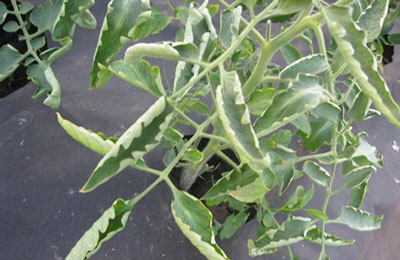
Many beginning gardeners are interested in the question of why the leaves of tomatoes in a greenhouse are curled and what to do. Everyone knows that tomatoes are tasty, healthy, but definitely capricious. To achieve a crop, you need to properly care. Many factors can affect yield, both in a positive and negative light.
Pests - cause leaf curl
Why do tomato leaves curl in a greenhouse and what should I do? During the period of growth and development of the plant, you can meet with various pests. They can be the main reason for curling leaves. Many parasites are located on the back of the leaf and drink juice, from such actions it begins to curl. Leaves may even turn yellow and dry. Do not forget to spend fertilizer fertilizing.
With parasites must be fought. For this, it is worthwhile to prepare special means with which you will spray the plant. There are various pest drugs.
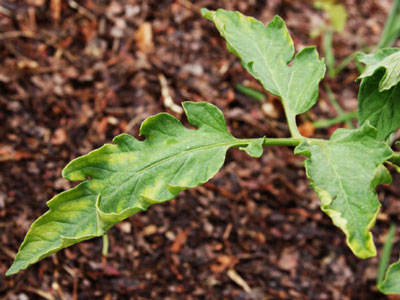
Causes of curling the upper leaves of the plant
Why do the top leaves of tomatoes in a greenhouse curl and what should I do? The causes of this phenomenon can be very diverse.
• This may be affected by high temperature. If it exceeds the mark of 35 degrees, then by lunchtime the leaves will curl into a tube, and in the morning they will be restored again. Therefore, it is recommended to regularly air in greenhouses.
• At night and in the daytime, the temperature in the greenhouses is different, therefore it is closed at night and opened for the day. Thus, the greenhouse for the whole day is well ventilated.
• Top leaves may curl due to improper watering. That is, even if it happens, it is shallow. And watering should be carried out even less often, but plentifully.
• The leaves also curl due to late removal of stepchildren and leaf cutting. It is necessary to pinch the plant when the stepsons will have a length of 7 cm. Each week, 2 sheets should be cut.
• The plant also suffers from pests. The bush allows you to eat fruits, and the seeds do not need to be harvested.
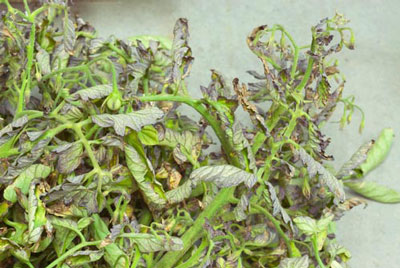
Causes of curling the lower leaves of the plant
Why do the lower leaves of tomatoes in a greenhouse curl and what should I do? Leaves can curl not only above, but also below along the central vein. In order to avoid such a phenomenon, it is necessary to adhere to some rules. Need to pre-select polycarbonate greenhouse tomatoes.
• Firstly, all transparent surfaces in greenhouses need to be whitened.
• Secondly, it is necessary to carry out the ventilation procedure very often.
• The roots of the bushes must be covered with straw or hay.
• Plants recommend spraying with urea. To do this, 10 liters of water must be diluted with 1.5 tbsp. urea.
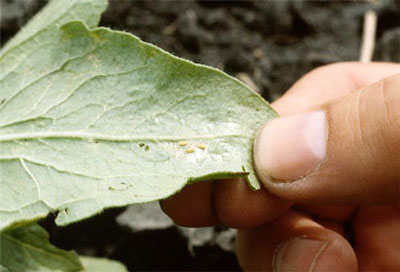
Any fungal disease is easier to prevent than to treat. There is a bio-fungicidal drug. They need to spray the plant. The reasons for twisting the lower leaves are completely similar to previous guesses. Tomatoes are capable of being affected by pathogenic microorganisms.
Infection can enter a greenhouse with contaminated planting material. Insects are capable of transmitting infection from diseased bushes to healthy plants, so you should get rid of them.
If you notice that the leaves along the vein turned pink and curled, then the plant is infected. Nothing can be done. It remains only to remove and burn the bush, otherwise the defeat can go to healthy bushes, and you completely lose the crop.

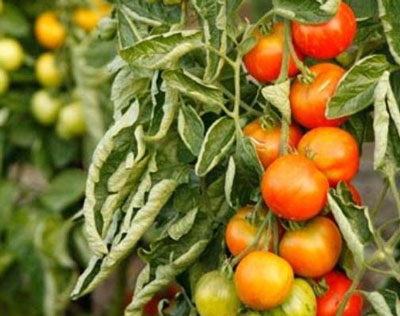



 Low-growing tomatoes, without pinching: 5 of the most delicious varieties
Low-growing tomatoes, without pinching: 5 of the most delicious varieties Why tomato seedlings grow poorly
Why tomato seedlings grow poorly We grow a tomato in a shell
We grow a tomato in a shell Growing tomatoes without watering according to the method of Kazarin
Growing tomatoes without watering according to the method of Kazarin